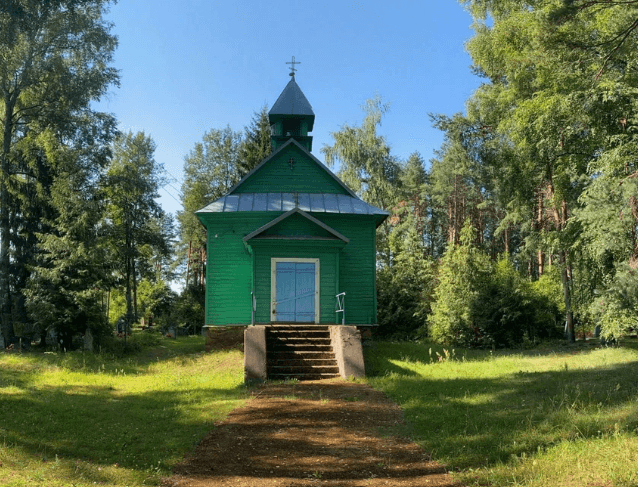Druya. St. George's Church.
Church
Belarus, Vitebsk region, Braslav district, Druya, St. George's Church
Description
The Church of St. George in Druya, dating from the second half of the 19th century, originally served as a cemetery chapel. However, after many Orthodox churches in the urban settlement were closed or ceased their activities for other reasons, they decided to transform the chapel into a full-fledged church.
The wooden temple building was built on a high foundation of rubble stone. Its architecture is characterized by restraint and simplicity of exterior design. In addition to the main volume, the church includes a vestibule and an apse. This temple is an outstanding example of folk architecture. Its appearance reflects the characteristic features of the retrospective Russian style, such as an onion-shaped dome and a four-sided drum topped with a hipped roof.
Categories
Historical
Architectural monument
Comments
Reviews to the Place
1Yaroslav Sg
29.03.2025
Druya. St. George's Church
Many centuries ago, Druya was a thriving city that arose in a picturesque place — where the small river Druika flows into the Western Dvina. Although some historians believe that the settlement appeared in the 15th century, the date of its foundation is traditionally called 1386. It was then that Druya was captured by Grand Duke Andrei Algerdovich, which was the beginning of its further development. Druya has long been in the possession of one of the most influential figures of the Grand Duchy of Lithuania, Chancellor Lev Sapieha. Thanks to this, the city became a significant point on the political and cultural map of the region, which attracted the attention of top officials of the state. It is known that it was visited by such historical figures as Peter I and Stefan Batory, which testifies to the importance of Druya in those days.
Once there were more than twenty churches in the village and its surroundings. However, over time, most of them have been lost. By the 20th century, only one chapel in the local cemetery had been preserved. It was later converted into St. George's Church, which still retains its importance as a spiritual center.
The temple was built on a solid rubble foundation and embodies in its architecture a combination of conciseness and traditional forms. The main structure of the church has a rectangular shape, which is flanked by a low vestibule and a pentagonal apse. The gable roof is crowned with an onion dome, which gives the temple expressiveness, and the four-sided tent drum emphasizes the traditional style of folk architecture. The wooden walls of the church are decorated with wood, and high arched windows fill the interior with light.


